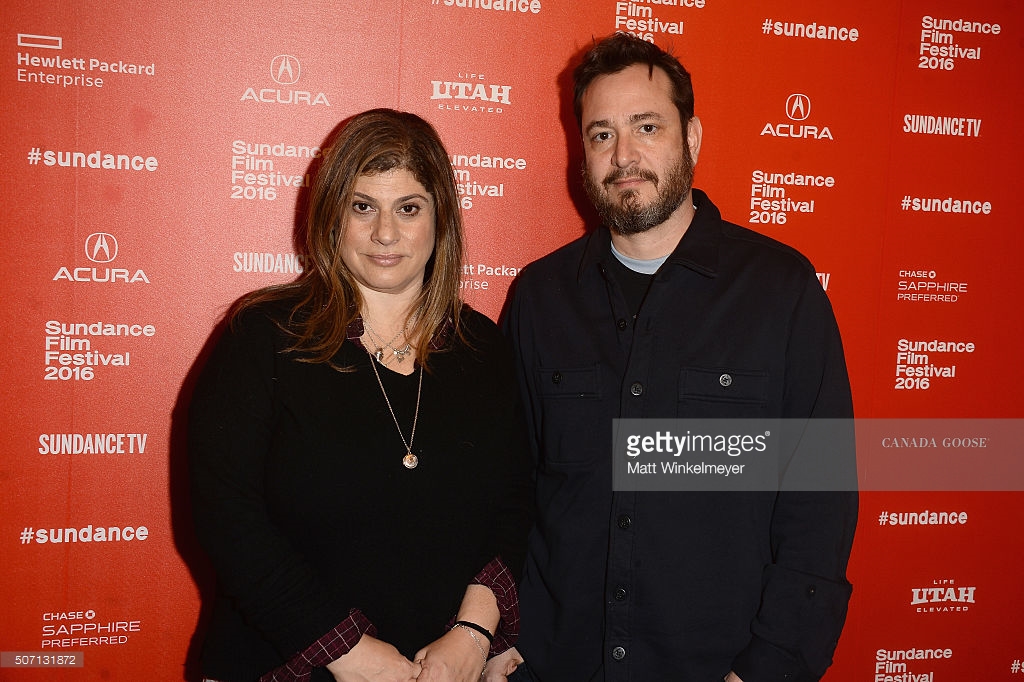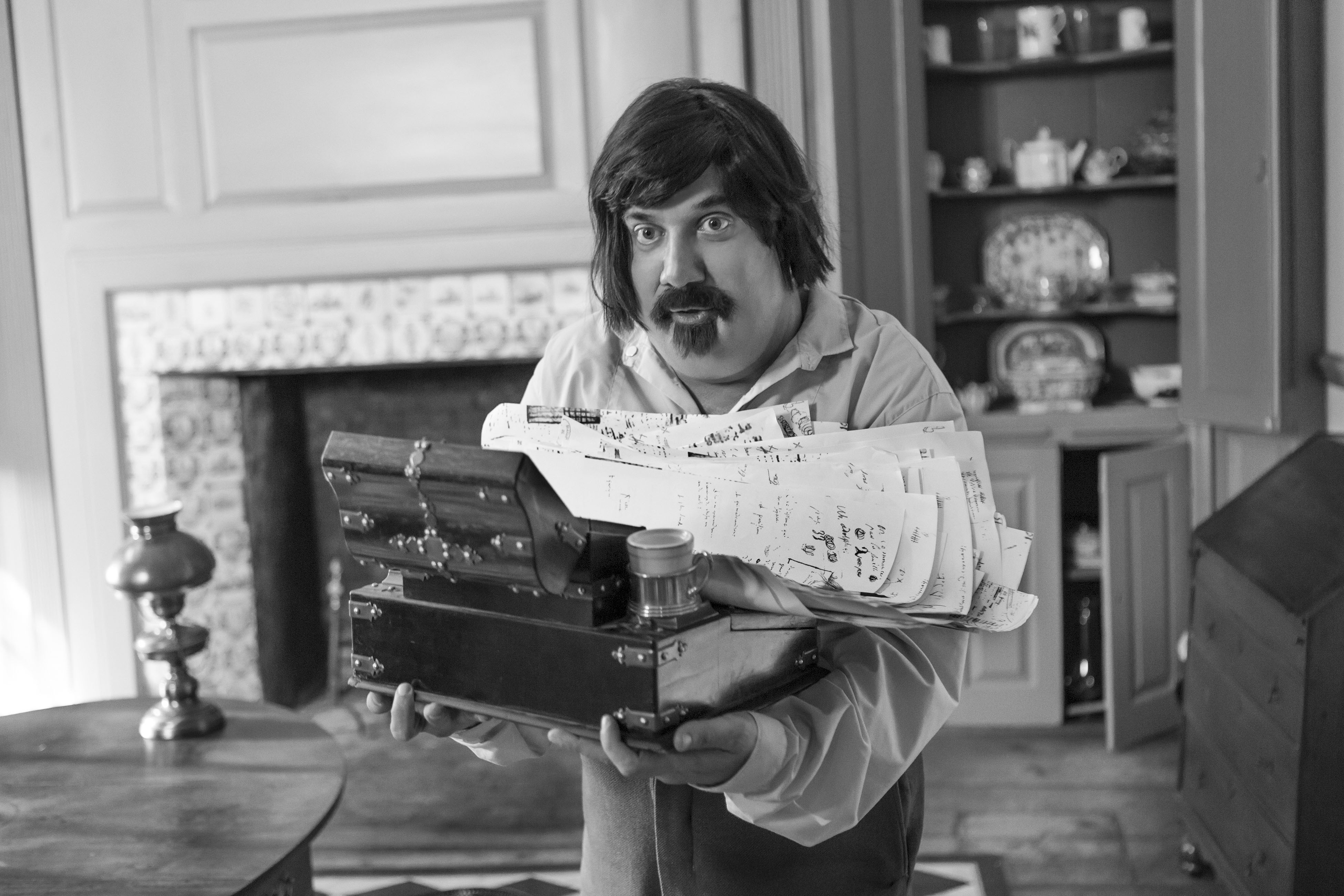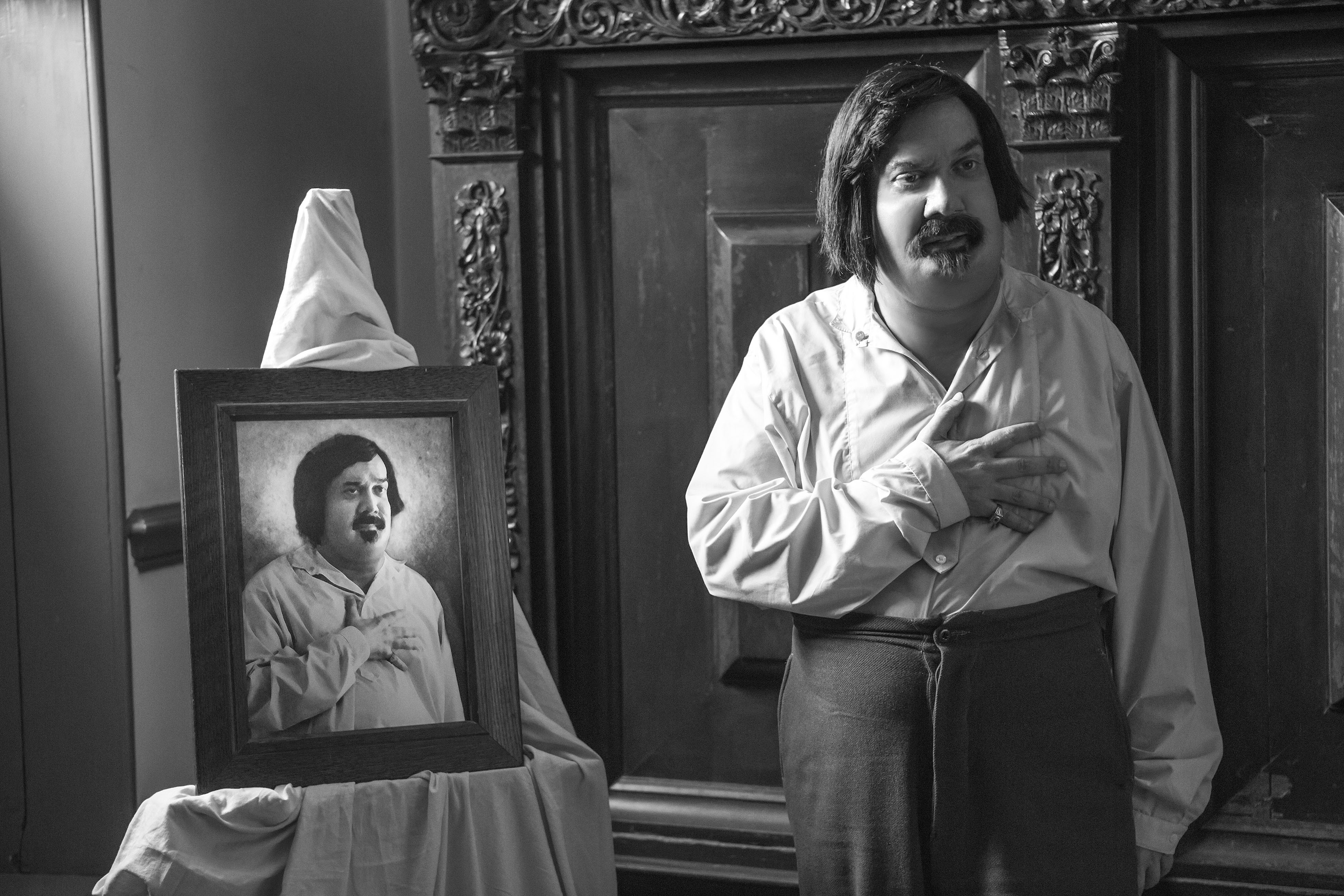Ask the Directors: for “The New Yorker Presents,” how did you adapt Shouts & Murmurs for the screen?
Amazon’s The New Yorker Presents (2015 - ), a visual storytelling interpretation of the famed New Yorker magazine, holds a special appeal for filmmakers because of its unconventional format. Each episode showcases a collection of short works adapted from magazine articles. As a result, top directors can take a break out of their busy schedules to create something brief: a short-form documentary, a visual essay or a dramatization of a comedy piece from Shouts & Murmurs. Among the roster of award-winning filmmakers who took part in The New Yorker Presents’ first season are acclaimed directors Shari Springer Berman and Robert Pulcini, the husband-and-wife team behind American Splendor (2003) and The Nanny Diaries (2007). Berman’s and Pulcini’s short comedy piece, “Le Café de Balzac,” starring Paul Giamatti as the over-caffeinated literary giant, features in the show’s first episode. According to Berman, the project had them at “New Yorker.”
“We are absolutely New Yorker readers,” Berman told ScreenPrism at Sundance Film Festival 2016. “The New Yorker is our bible. It is the only magazine that we have a subscription to and have always. I’ve been subscribing to it long before I met you,” she said, looking at Pulcini.
“Yes, her relationship with The New Yorker far precedes me,” Pulcini agreed.
Given that the pair also went to Columbia film school with showrunner Kahane Cooperman, they had no doubts about joining the project. “We were like ‘The New Yorker?’, we’re in,” Berman said. “There’s an amazing amount of incredible material there, from profiles to short stories to Shouts & Murmurs, which is short comic pieces, which is what we did. The magazine itself is pretty incredible. So we were totally excited.” At the same time, they were aware of the challenge of doing justice to The New Yorker’s level and tone. “You are held to a very high standard,” Berman said. “And I thought about it while we were doing it. You can’t do anything that isn’t thought through and intellectually challenging. I did think about making it honor the name of the magazine. Hopefully we did honor the magazine. But if definitely hangs over you: this has got the name of The New Yorker on it, so you have got to do a good job.”

Shari Springer Berman and Robert Pulcini at the premiere of The New Yorker Presents (2015 - ) at Sundance Film Festival 2016
Once they signed on, Berman and Pulcini had to choose which piece to adapt from the magazine’s overwhelming wealth of material. “They sent us a few ideas,” Pulcini said. “There were some good ones, but we were like, do you have more? And then they kept sending more. And we were like, do you have more? I think in the back of our minds we were also looking for something to do with Paul Giamatti.” The directors also needed something short because they were working on multiple projects, so they didn’t have time to direct a longer documentary piece. Finally, when they read “What I Assume Honoré de Balzac Thought After Drinking Each of His Fifty Daily Cups Of Coffee” by Brendan O’Hare, they had found the one. “Plus I’m such a coffee fanatic, it really hit home for me,” Pulcini said.

Paul Giamatti in “Le Café de Balzac.” Written by Brendan O’Hare; directed by Shari Springer Berman & Robert Pulcini. Photo Credit: Amazon Studios
Pulcini found some passionate odes to coffee written by Balzac himself, who penned an essay called “The Pleasures and Pains of Coffee” for the appendix to an edition of La Physiologie du Gout by Anthelme Brillat-Savarin. Pulcini told ScreenPrism, “It’s just hilarious the way he writes about coffee: ‘it brutalizes your beautiful stomach linings as a wagonmaster abuses ponies… Memories charge in, great flags on high. The cavalry of metaphor deploys with a magnificent gallop the artillery of logic rushes up with clattering wagons and cartridges…’ Basically he wrote this whole thing about how coffee ignites the creative juices in this ridiculously flowery, metaphorical way. The piece is, the humor of it is very true to his relationship with coffee.”
Adapting the short piece into a script took only a couple days. “Basically this article was just ‘Cup 1’ and then a line, ‘Cup 2’ and a line, so in the adaptation we were like, we have to put it on its feet, keep it interesting. And give it motion. So we kind of analyzed what his relationship is. At some point we have Paul almost on a shrink’s couch talking about his obsession with coffee and his worries and his fears. It was just a matter of putting it on its feet, really, with this piece.”
The shoot itself was very fast. “We shot the whole thing in one day,” Berman said. “One long day up in the Bronx. And the Bronx stood in for Paris. We found a really beautiful old house in Van Cortland Park in the Bronx that is a working museum, which has a lot of similarities to Balzac’s apartment in Paris. So we shot it all in and around that one building.” The museum also had some unexpected policies, though, she said. “They had a lot of rules about what we could do. We couldn’t sit on certain pieces of furniture because they were original. And one of the rules was that we couldn’t make coffee—we couldn’t brew coffee in the house. The whole thing is about coffee. How are we going to do this? So we had to get a generator and brew it outside. It was like, wait, we are making a whole thing about coffee, but we can’t make it. Midway through the day (it was a long day of shooting), Paul Giamatti was like, ‘I know this sounds really crazy but I actually need a cup of coffee.’”
Balzac reportedly did drink 50 or so cups of coffee per day (although he kept no official count, of course), but Berman clarifies that 50 cups is not the same volume now as it was then. “Our production designer/art director was very good and very accurate, and he did some research and actually got the server. It looks like a tea server but that in those days is what they would use to serve coffee. But he said that the cups they used during Balzac’s era were more like demitasse cups. So he was drinking a little bit less. It’s still crazy, but it’s not quite as crazy as it might be.”
Balzac died at 51, “they say because of results of drinking too much coffee,” Berman said. “He died of his coffee addiction. It corroded his stomach.”

Paul Giamatti in “Le Café de Balzac.” Written by Brendan O’Hare; directed by Shari Springer Berman & Robert Pulcini. Photo Credit: Amazon Studios
Berman and Pulcini are unusual in the film business not just for achieving great artistic success as a co-director team but also for their lasting marriage. Berman and Pulcini have been partners in life and in film for most of their working life. “We’ve been doing it for a long time, so it’s second nature now,” Pulcini said. “It’s good to have someone that you share all these ups and downs with. The business is always presenting new challenges, and it’s hard for other people to relate. So I think there’s an asset in that. We have a shared aesthetic.”
“We met in film school, at Columbia—we were both film students,” Berman said. “We actually started working together first before we were a couple, and I think that is a good way. I think if we had been a couple and then started working together, it might have been impossible. It’s all we know. We’ve been working together for a very long time. It might be crazy, but it works for us.”
Berman and Pulcini said they hope to be involved with The New Yorker Presents in the future if it comes back for a second season. “It’s a treasure trove of great pieces that they have,” Pulcini said. “The fact that you can do something short with them is so appealing, and not have to think about how to open it up to a feature if you want to work with some of this material.”
“There’s a million different things in The New Yorker that I could get my hands on and want to adapt,” Berman said. “We’ve been very inspired by The New Yorker, throughout the years, things we’ve read. Some of the greatest writers of all time have written for The New Yorker. It would be an honor.”
Read our interview with The New Yorker Presents showrunner Kahane Cooperman here.
”... coffee is a great power in my life; I have observed its effects on an epic scale. Coffee roasts your insides. Many people claim coffee inspires them; but as everybody likewise knows, coffee only makes boring people even more boring. Think about it: although more grocery stores are staying open in Paris until midnight, few writers are actually becoming more spiritual.” - Honoré de Balzac, “The Pleasures and Pains of Coffee”

